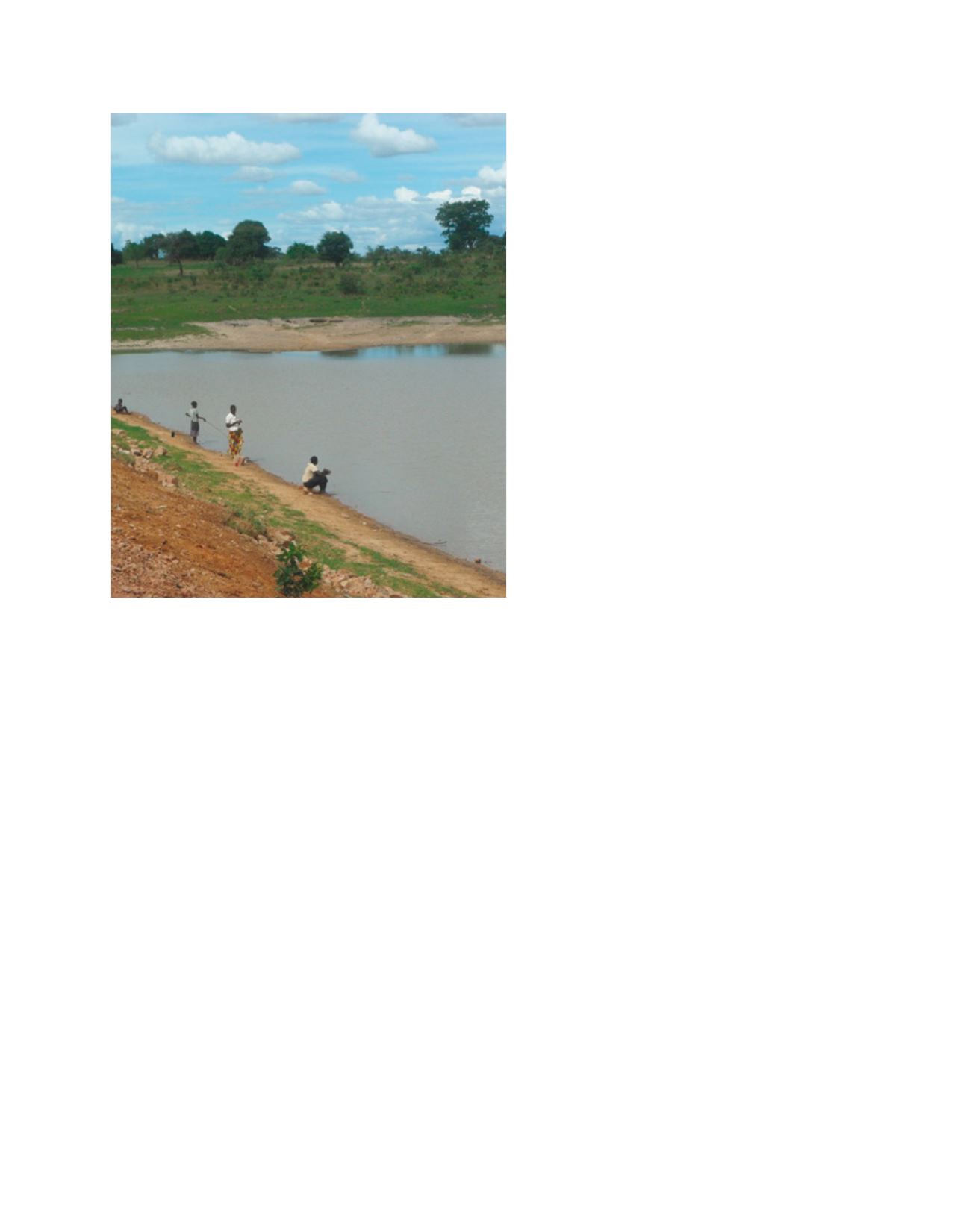

[
] 95
T
ransboundary
W
ater
M
anagement
African Development Bank and World Bank. SADC
has also provided an effective strategic framework
to Zambia through the revised Protocol on Shared
Watercourses and the Regional Strategic Action Plan.
Consensus has now been reached on the importance
of Zambia’s participation in the management of trans-
boundary water resources as a shared responsibility
with other riparian states.
Regional integration and benefit sharing through
river basin institutions in both the Zambezi and Congo
river basins are a priority for Zambia as it implements
the legal and institutional framework for the water
resources management subsector. Immediate plans
include strengthening WARMA and related catchment
institutions, capacity building at all levels, develop-
ment of the water resources management strategic plan,
catchment plans, collaborative research and project
implementation, and the re-examination of invest-
ments for water-related infrastructure. Examples of
Zambia’s current participation in active transboundary
water management include the management of Lake
Tanganyika by Tanzania, the Democratic Republic
of the Congo, Burundi and Zambia through the Lake
Tanganyika Authority; and management of the Kariba
Dam Complex with its hydrology by Zimbabwe and
Zambia. In addition, Zambia has recently indicated
that it will become part of ZamCom following its
successful completion of the water resources manage-
ment subsector. The establishment of the Water Sector
Advisory Group comprising key sector stakeholders,
and the coordination of donors through a joint assis-
tance strategy, was another important milestone in
Zambia’s water sector reforms.
Last, but not least, Zambia is a landlocked country
with a population now standing at more than 13
million. Its river systems are characterized by flood-
plains and dambos. Major wetlands are the Kafue flats,
Lukanga swamps, Barotse plain, Bangweulu swamps,
Liuwa plain, Busanga and Luena. According to Vision
2030, Zambia is geared to attaining the status of a
middle-income country through sustainable use of
water resources to support the main economic pillars
of the economy. The immediate demands for water
use include domestic, environment, hydropower,
irrigation, industrial and mining. However, Zambia’s
hydropower potential is about 6,000 MW against the
developed 1,788 MW; and the irrigation potential is
about 520,000 ha of land out of which only 30 per
cent is currently irrigated. Mining activities are also
on the increase.
Zambia has made good progress in its water sector
reforms although these reforms have generally been
slow and lengthy, partly due to the national stake-
holder consultative process. Nevertheless, there is
evidence that Zambia has positioned itself for effec-
tive transboundary water resources management
from the viewpoint of its policy, planning process,
envisaged collaborative opportunities and legal and
institutional frameworks.
ment at national, catchment and subcatchment levels, with strong
sector stakeholder participation through water users’ associa-
tions to enhance water governance. Furthermore, the WRM Act
recognizes water as a finite and vulnerable resource, and includes
specific provisions that recognize the responsibilities linked to
the transboundary nature of managing shared water resources
with a focus on the principles of equity for meeting various
national water demands and sharing the water of transbound-
ary river basins. The Water Resources Management Authority
(WARMA), a semi-autonomous catchment management institu-
tion with catchment and subcatchment councils, was established
in October 2012. With the WARMA board in place, a stepwise
approach has been adopted as a strategy for the operationaliza-
tion of WARMA from 2013, with a focus on establishing effective
water users’ associations to facilitate the decentralization of water
resources management service provision. Ongoing water sector
reforms in the water resources management subsector entail the
establishment of a government department responsible for water
resources planning and policy development, and the reorganiza-
tion of the DWA in light of the water resources management
functions delegated to WARMA.
External cooperation from Zambia’s development partners
takes the form of financing for the water sector on a bilateral and
multilateral, as well as a project approach basis. This has been
critical to the success of the water sector reforms. The support
has come from countries such as Germany, Denmark, Ireland,
Japan, the United States and China among others, and institu-
tions such as the Global Water Partnership, European Union,
Fishing at a dam in Chipata District
Image:
N.F. Ngoma


















